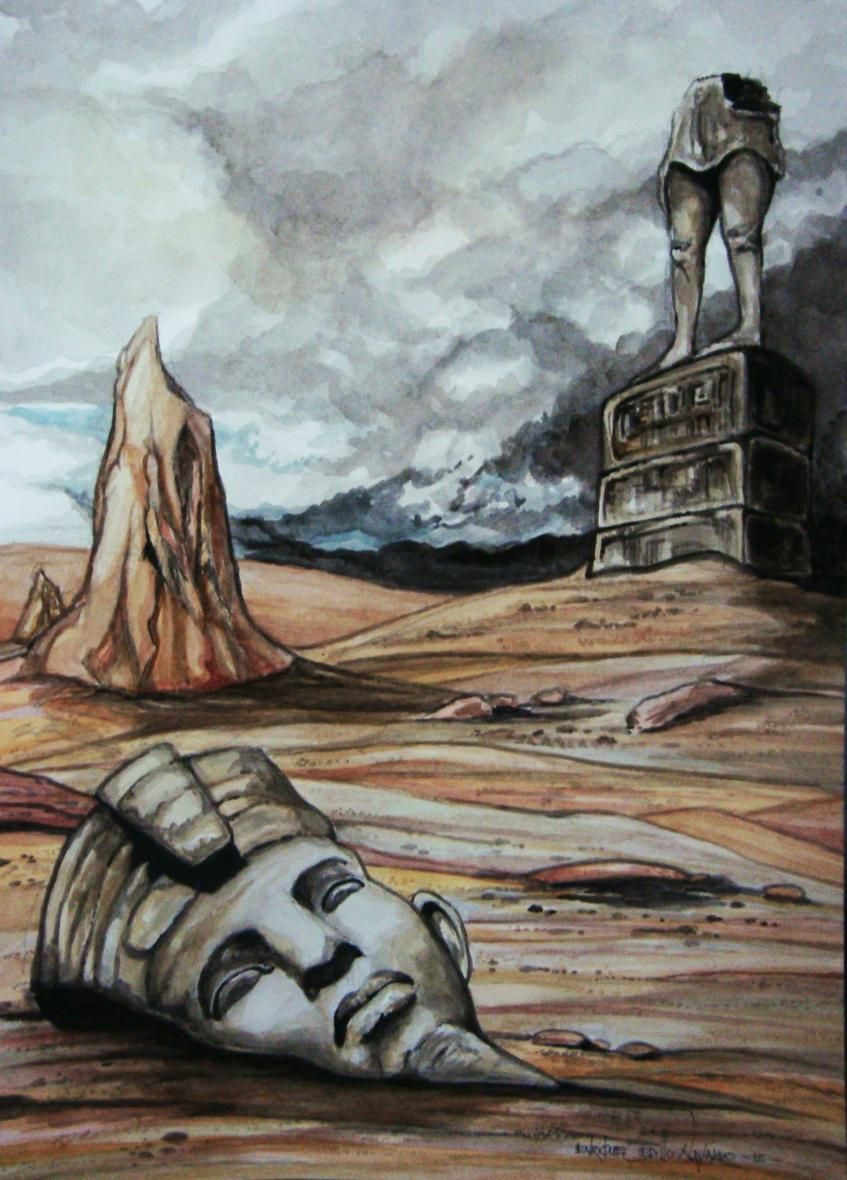
Shelley’s reader encounters this message through the screen of many other interpreters. Taking into account that the “hand” is the sculptor’s, the “heart” is the king’s, and “them” refers to the “passions” of Ozymandias (line 6), the statement becomes more clear: while the sculptor “mocked” (i.e., both imitated and derided) his subject’s intensity of emotion, Ozymandias continued to feed his pride- though he was already “full of himself.”

This difficult line is composed in the traveller’s typical, fragmented style; the reader should note that it is the traveller, not the speaker or Shelley, who is struggling so with language. The lines also suggest that the sculptor was a keener observer than the king himself, who might have objected to the portrayal of himself had he understood the implications of his own frown.

The description of the statue’s face introduces the poem’s central irony: the power that Ozymandias meant to capture for eternity has, instead, become a testament to the mutability of such power. These two vastly different perspectives on how the tale is told anticipate the many crossroads of interpretation in “Ozymandias”. At the same time, however, the fact that the reader hears the story from ‘the friend of a friend’ could make its validity seem questionable. Because the following description comes from someone who went to Egypt and actually saw the statue, the story seems more credible. Notes and Explanationsīy prefacing the narrative with this line, the speaker makes the story that follows both more and less reliable. If you don’t have those then in the long run you are a “colossal wreck.” Thus, the perfectly composed scene itself, the Egyptian imagery, and the Biblical backstory convey a perennial message and make this a great poem.

If all ordinary pursuits, such as power and fame, are but dust, what remains, the poem suggests, are spirituality and morality-embodied by the ancient Hebrew faith. If the forces of time, history, and nature can take down the Egyptian civilization, it begs the question, “Who’s next?” Additionally, Ozymandias is believed to have been the villainous pharaoh who enslaved the ancient Hebrews and who Moses led the exodus from. In terms of lost civilizations that show the ephemeralness of human pursuits, there is no better example than the Egyptians-who we associate with such dazzling monuments as the Sphinx and the Great Pyramid at Giza (that stands far taller than the Statue of Liberty)-yet who completely lost their spectacular language, culture, and civilization. There are yet more layers of meaning here that elevate this into one of the greatest poems. Success, fame, power, money, health, and prosperity can only last so long before fading into “lone and level sands.” But, beyond that there is a perennial lesson about the inescapable and destructive forces of time, history, and nature. The image of a dictator-like king whose kingdom is no more creates a palpable irony. Yet, all that’s left of the statue are his legs, which tell us it was huge and impressive the shattered head and snarling face, which tell us how tyrannical he was and his inscribed quote hailing the magnificent structures that he built and that have been reduced to dust, which tells us they might not have been quite as magnificent as Ozymandias imagined. This king is still regarded as the greatest and most powerful Egyptian pharaoh.

In this winding story within a poem, Shelley paints for us the image of the ruins of a statue of ancient Egyptian king Ozymandias, who is today commonly known as Ramesses II. The theme in Shelley’s poem seems to be that nothing lasts forever, even the most powerful have to fade and decay, and with time their greatness and power, too, will be forgotten. Shelley ends his poem with a sense of how nature is eternal, which he portrays in the vastness of the desert’s sands. The traveller says the “sneer and the cold command” on the statue’s face is the only remnant of this ancient civilization’s ruler.


 0 kommentar(er)
0 kommentar(er)
